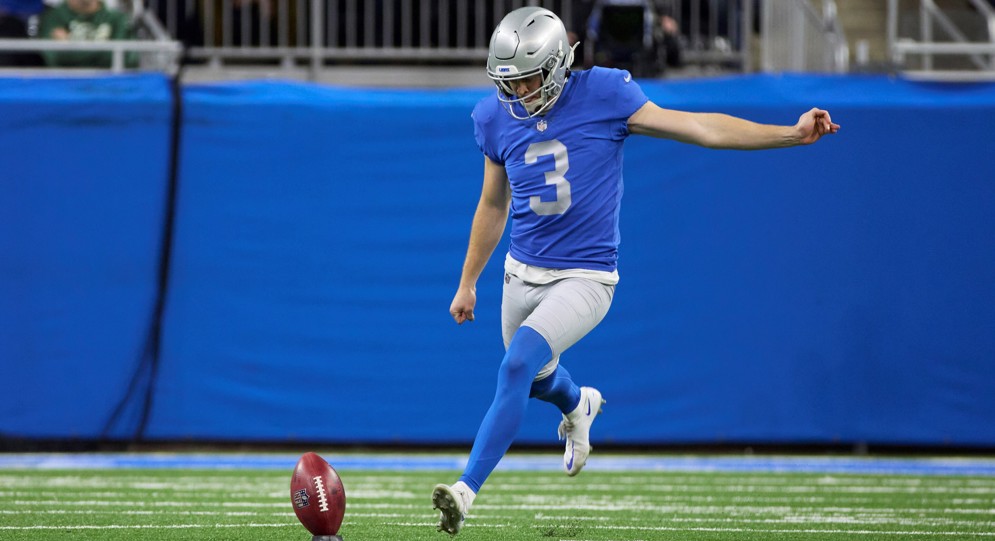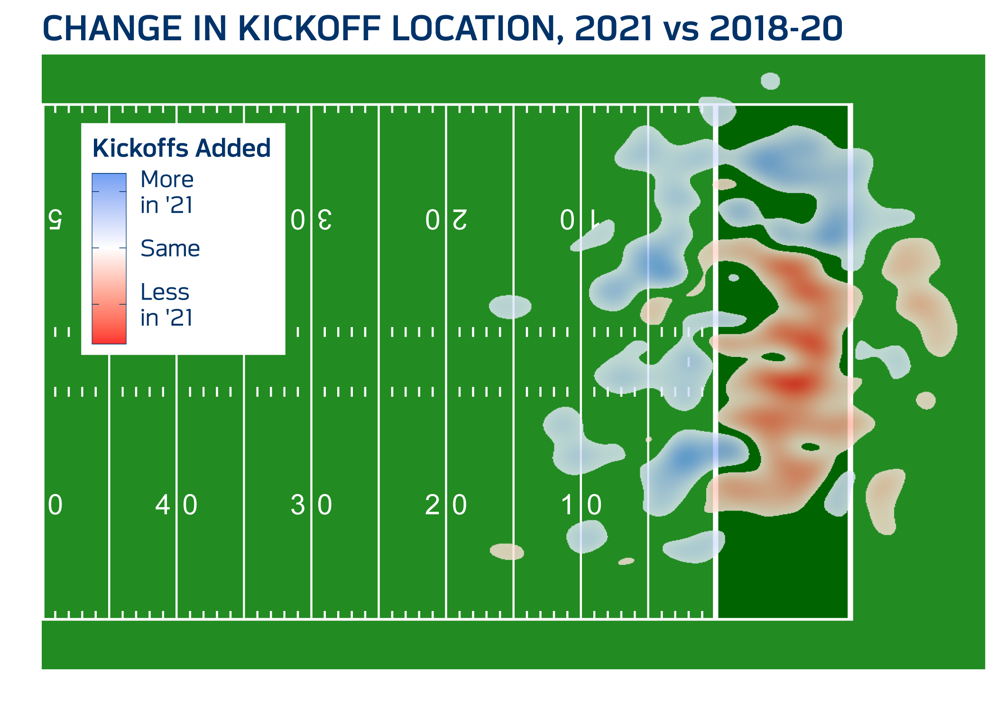The Extra Point With NFL kickers better than ever before, why are kickoffs shorter?
August 23, 2022

NFL kickers and punters have slowly improved for decades, resulting in more accurate field goal kicking, lower touchback rates on punts, and rules changes that impacted both place-kicking and kickoffs.
Kickoffs have seen the most dramatic results, with touchbacks going from a 41% touchback rate in 2011 to 61% in 2020.
Despite the trend in kicker improvement, in 2021, following two consecutive years of record highs, the rate of touchbacks on kickoffs dropped to 57%. With kickers more skillful than ever before, what changed?
The stats show that NFL kickers purposefully kicked it shorter in 2021.
The map below compares the location of kickoff landing spots in 2021 relative to the three previous seasons (2018-20). The blue areas correspond with higher landing rates in 2021 (largely before the goal line), while red areas (largely in the end zone) reflect lower landing rates.

In 2021, 27.7% of kickoffs fell short of the end zone in comparison to 23.4% in 2020. Interestingly, the results were not consistent across the league, with some teams (or special teams coaches) moving in different directions.
Using kickers that remained on the same team in 2020 and 2021, the chart below shows year-over-year change in percent of short kickoffs. Each line represents a separate kicker. In blue, there are nine kickers (including the Houston Texans’ Ka’imi Fairbairn and the San Francisco 49ers’ Mitch Wishnowsky) whose short kickoff rate jumped by at least 10% from 2020 to 2021. In red, there’s one kicker (the Detroit Lions’ Jack Fox) who saw a corresponding decrease in short kickoff rates.

The increase in short kickoffs, with a noticeable between-kicker deviance in behavior, suggests teams are purposefully kicking short. In doing so, kickoff teams are forcing the return team to actually return the ball. So, why would they do that?
Despite the ball going a shorter distance, kickoffs landing between the 1-5 yard line result in worse field position for the receiving team (average field position is the 24-yard line) than kickoffs landing inside the first five yards of the end zone (average field position is the 24.7-yard line). In turn, the slight field position benefit forces teams to return the ball which is the only way of potentially forcing a turnover.
The kickoff is one example of several rules changes that have led to different on-field outcomes – some intended, some unintended. As the 2022 season kicks off, we’ll be tracking if the trend in short kickoffs continues.